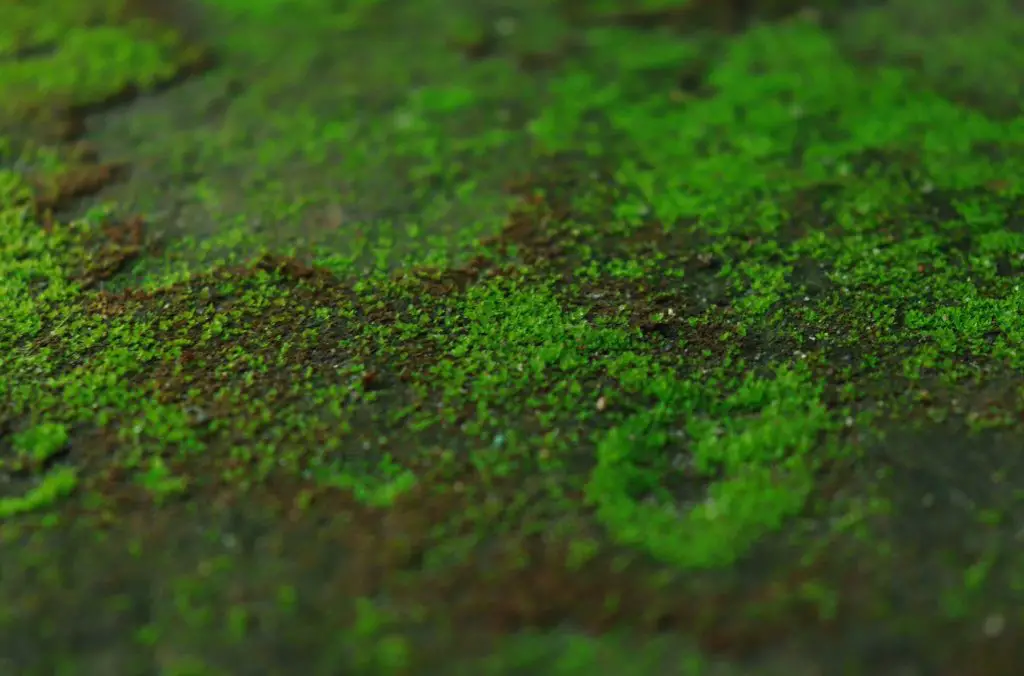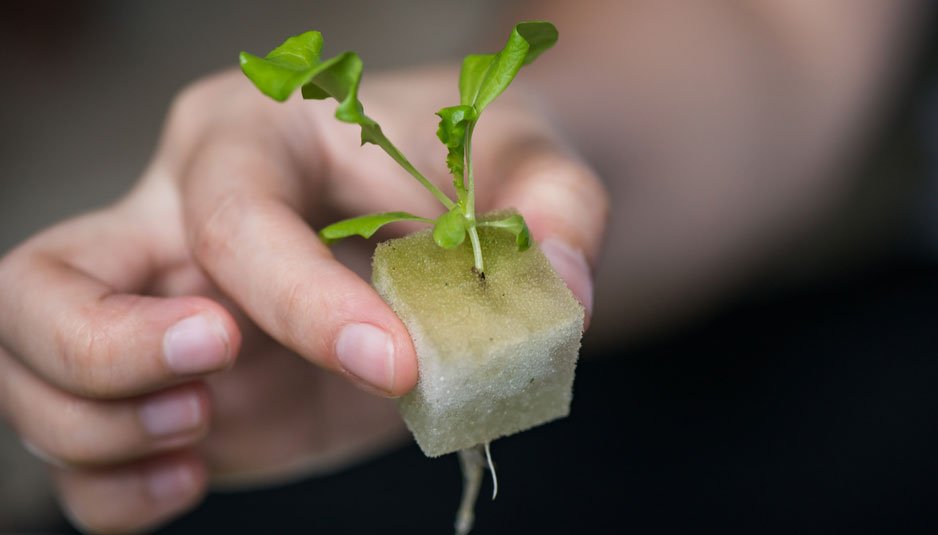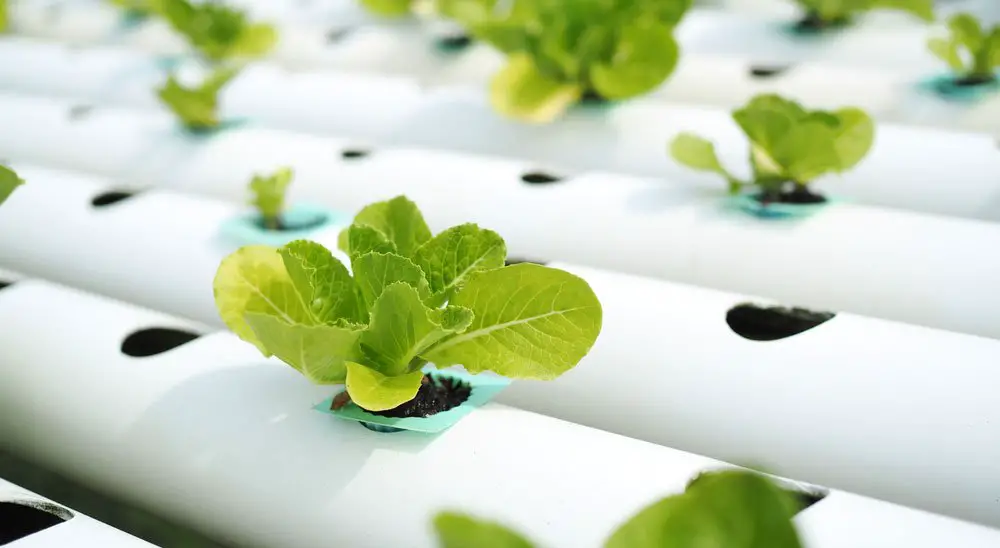How to Get Rid of Algae in Hydroponics?

This post follows our research editorial guidelines.

With all the technological innovations in agriculture over the ages, the basic idea remained the same: putting seeds into soil for growing plants until hydroponics came about.
As per Nasdaq, “Estimates are that a 30-story building with a 5-acre basal area would be able to produce the same amount as a 2,400-acre farm.”
I’d say that’s pretty impressive! However, where there are hydroponics systems, there are good chances of the nuisance of algae growth.
Yes, I’m talking about that thick, slimy layer that develops on the water surface. It could often result in significant problems if not dealt with sooner, especially because algae can grow and be quite clingy to any surface.

Table of Contents
Is algae bad for hydroponics?
Small amounts of algae are completely normal to find in a hydroponic system, this is especially the case towards the end of a crop cycle. If you find the whole water supply tank is covered in algae then this could be bad for your plants and overall hydronic setup.
In this article, I’ll help you learn how to get rid of algae in hydroponics. Keep reading!
There are many side effects of an algae overload in a hydroponic system:
- It could get into the pipes, cling to conduits and channels, grow on media, and ooze from pumps and tubing; this results in the entire system getting clogged.
- Heavy algae infestation seals off the medium and substrate, hindering nutrient absorption by the plants.
- As the algae use oxygen, it depletes dissolved oxygen levels for the plants.
- With the nutrients being used by the algae for growth, the plants receive insufficient nutrients.
It leads to unbalanced pH levels in the hydroponic system, which harms the plants.
What is Algae?
Algae is a simple aquatic organism similar to plants in terms of the needs for growth – nutrients, water, and sunlight. While there are different algae forms, most are similar in appearance – stringy, furry, or slimy.
Algae are nuclei and differ from bacteria. It makes its food from sunlight through photosynthesis.

How to Identify Algae in Hydroponics
Identifying algae is essential to preventing and managing it. Although plant-like, they aren’t one plant but a group of simple aquatic plants. The many forms of algae include pond scum to kelp. Typically, the common characteristics of algae include:
- The color of algae is often green like moss but can be shades of red and brown as well
- The texture of algae could range from stringy to slimy, furry or even bubbly.
- Once the water source is removed algae will dry like a powder
- Unlike plants you will not find any leaves or root systems algae is a single cell organism.
- Their growing requirements include sunlight, nutrients, and water which is why your hydroponic system is such a great place for algae to grow.
- Even with a minimal amount of the 3 requirements, algae survive in any environment long after plants have been removed.
Algae will thrive in a hydroponic system since their needs are similar to those of the plants growing in it. They compete for the same nutrients, and sometimes WIN!
What are the different colors of algae?
Green – Green algae are mainly Chlorophyta, although there are other green algae types as well.
Brown – Belonging to the Phaeophyceae family, the multicellular brown algae are often seaweeds.
Black – Warm water, poor filtration systems, and unbalanced pH levels lead to the growth of the colony-based single-celled black algae in hydroponics. Although not harmful by itself, it could be a harmful bacteria carrier.
Bluish Green – Green algae with Cyanobacteria inside it appear bluish in sunlight.
Red – In aquaponics, the hazardous red algae could harm fish.

Is Algae Bad for Your Hydroponic System?
Since algae gets into hydroponics systems through microscopic airborne spores, it’s almost impossible to prevent it. What you can’t see, you can’t prevent.
These durable algae spores can get carried by the wind, with a single spore capable of latching onto the system and thriving with the ideal growth conditions.
Maintaining an algae-free hydroponics system is next to impossible; there will be some level of growth. A healthy system can tolerate algae in small amounts. However, increased levels of hydroponic system algae can have detrimental effects.
- It can cause significant swings in the pH levels by almost 2 units.
- Plant roots covered by algae suffocate and are prone to attacks by harmful pathogens.
- Algae attract fungus gnats; their larvae penetrate the roots and tunnel into the stems, wreaking havoc on hydroponic plants.
- When algae decompose, they create a terrible odour produced toxins that are harmful to the health and well-being of plants.
- Algae-produced toxins feed other harmful fungi, helping increase their population in the system.
How to Clean Algae Out of Your Hydroponic System
Since algae spores are dispersed by air, cleaning the hydroponic system and the entire growing area is essential. Anything that comes into direct contact with the system must be thoroughly cleaned. This includes pots, pebbles, and any other items.
Step 1: Thorough Cleaning of Your Growing Room
If you’re maintaining a hydroponic system indoors, the first step is to clean the room thoroughly.
Any spores that drift about can be then removed while cleaning the system. The room must be cleaned from the top downwards to avoid dust falling on clean surfaces. Use warm water with vinegar at a ratio of 5-1. This will avoid any soapy residue left behind that could harm your next harvest.
Ensure all lights, electrical area, walls, and work surfaces are cleaned to avoid future contamination. Follow this by cleaning the system’s air intake filters with the vinegar solution to remove any particles falling out of the filter along with the room.
Step 2: System Drain
Discarding the old nutrient mixture is the first step to draining the system. The reservoir needs to be manually emptied for systems that don’t use a pump. The removal method depends on the system:
Tanks with a drain valve: Opening the valve will let all the water out. However, you must ensure the water drains into a run-off area at a lower level than your tank, which can be cleaned later.
Any leftover water in the system can be cleaned with a bucket and sponge.
Pump return method: Isolate the electronics and remove the pump from the tank. The female connector of the outlet pipe needs to be connected to the pump. By placing the outlet pipe where you want the water to drain, the pump can be used to remove the water.
When the pump dries at the lowest point of water, turn it off and manually remove the remaining water with a bucket and sponge.

Step 3: Cleaning Solution
To clean the parts of the system and eliminate traces of pathogens, algae, or bacterial growth, one of the following cleaning solutions can be used:
Food grade Hydrogen Peroxide: 3 ml of hydrogen peroxide needs to be mixed for each gallon of water. A 35% concentration must be used.
Unscented Bleach: Mix about 1.3 oz of bleach for each gallon of water to give a 1:100 ratio.
Vinegar: Although it doesn’t sterilize, sanitizing an organic system can be done with vinegar at a 1:5 ratio with water.
Step 4: Pumps and Air Stones
Use the cleaning solution to clean pumps and stones. There could be algae build-up inside the pumps, making it hard to see or remove.
Soak the pots, growing medium, and pumps in the hydrogen peroxide solution while cleaning the rest of the system.
Step 5: Hard-to-Access Parts and Debris
Remove hard-to-access parts of the system and clean them by hand.
Also, remove debris or broken roots as these can be a growth medium for pathogens, including bacteria. More importantly, they could be algae carriers, reintroducing spores back into the system.
Small components can be soaked in a 1:1 ratio mix bleach bath, following which the items must be rinsed at least three times to remove any traces of bleach.
Step 6: System Cleaning
Hydroponic systems primarily revolve around growing lush green plants in the absence of soil. It is also referred to as tower gardens, tower hydroponics, and tower grow systems.
Also, the hydroponic systems help increase overall efficiency by reducing the overall waste production. With appropriate systems in place, you can grow at least 5 plants in the same area used by 1 plant. It not only helps you save space but also requires less care and maintenance.

How to Prevent Algae from Growing in Your Hydroponics System
While you can’t completely prevent algae growth in your hydroponic gardens, some measures can ensure the best possible results. Prevention of sunlight reaching the growing medium and nutrient solution is a good start since algae cannot grow without sunlight.
- Place a light-proof cover over solution reservoirs, growing channels, and other areas that can’t be darkened.
- Use a 250-micron thick plastic film around the plants to protect the growing medium and block the sun’s UV light.
- Wherever possible in the system, use opaque or solid colored materials to prevent light penetration.
- Keep the nutrient solution between 65-68 degrees, ensuring algae growth is slower.
- Ensure the nutrient solution is well oxygenated to keep pathogens out.
- Change the water in the system once every 14-21 days and regularly scrub the inside of the water reservoir between changes.
- Use an inert growing medium like Rockwool or LECA.
Alternative Ways to Prevent Algae in Hydroponics
Cutting off any potential light sources inhibits algae growth effectively. There are also some alternative measures to control algae.
Cutting off any potential light sources inhibits algae growth effectively. There are also some alternative measures to control algae.
Cutting off any potential light sources inhibits algae growth effectively. There are also some alternative measures to control algae.
Cutting off any potential light sources inhibits algae growth effectively. There are also some alternative measures to control algae.
Grapefruit Seed Extract
An organic element for algae control, grapefruit seed extract in the proper dosages effectively eliminates and prevents algae growth.
Not only is this a powerful anti-fungal, but it’s also an anti-bacterial and anti-parasitical compound.
It has been used in drinking water, lakes, and ponds with no side effects. When used in low doses, this is effective in hydroponic and aquaponic systems.
To prevent algae growth, use about 5-10 drops of grapefruit seed extract for 1 gallon of water in the system. Care must also be taken to filter out dead algae to avoid oxygen concentrations decreasing in the system.
UVC Light Treatment
Sterilization of the nutrient solution can be done with UV light. A UVC light can be installed in the water filtration system to eliminate potential microorganisms, including algae and algae spores.
Although costly, this is a good solution for an algae infestation in the system.
However, if you have an algae colony attached to the tank walls and other surfaces in your hydroponic system, the UV light won’t do much to destroy it.
Barley Straw Rafts
For large hydroponic systems, barley straw rafts that float in water are suitable for fighting algae growth.
As aerobic decomposition occurs, the barley straw releases a chemical solution that inhibits algae growth.
This is a slow process, and high dissolved oxygen levels need to be ensured for aerobic decomposition. Liquid barley straws are available as well. These are effective in preventing growth and killing algae.
Monitoring the death rate is vital since decomposing algae reduces the dissolved oxygen amounts in the system.

FAQ
Can Algae Hurt Your Plants?
No, small amounts of algae do not harm the plants in your hydroponic garden. If not kept under control abundant algae growth can be an issue for your plant’s health. That is why it’s important to regularly clean your hydroponic system. The suitable time to treat the system would be after harvesting the crops.
An excess algae growth can clog the system, with clogged pipes leading to overflow or a blocked pump that stops functioning.
Apart from the wear and tear to the system, algae deprive the plants of oxygen and nutrients. They grab the oxygen from the plant’s root system, causing the plants to wilt eventually. Almost any hydroponic system has algae growth at some point so no need to fret when you see it start to appear.
Can Algae Be Good For Your Hydroponic Plants?
I wouldn’t be surprised if you were wondering, ‘can there be good algae?’ after reading so many unpleasant algae facts.
Green algae are the most common type, indicating good water quality. While they are considered ‘good,’ keeping their growth under control is essential.
Algae impact the carbon and nutrient cycling and use light to convert carbon dioxide into cellular tissue. They generate oxygen like plants. Along with other microorganisms like bacteria, algae help minimize levels of nitrogen (from dead vegetation).
However, the nitrogen is released back into the system when the algae die.
Small amounts of algae in hydroponics are unavoidable. When they start growing in excess, measures must be taken to control it.
Algae and pH Fluctuations in Hydroponics
Algae are bound to grow where there is water, light, oxygen, and nutrients. As soon as the ideal conditions are met, they get a foothold and cause issues, including severe pH level fluctuations.
Like plants, algae use carbon dioxide, light, and nutrients during the daytime for photosynthesis. Towards the end of the process, the pH level is typically at its peak.
At night time, they consume the dissolved oxygen and release carbon dioxide into the water via respiration. The carbon dioxide then creates carbonic acid, causing the pH levels to drop.
With the progress of such pH swings, plants suffer because of nutrient lockout or slowly drown owing to depleted levels of dissolved oxygen.
My Final Thoughts
Eliminating all chances of algae formation in your hydroponic system might be almost impossible.
I would suggest taking as many precautions as possible to limit its exposure and boost the chances of having an algae-free system that performs well. Prevention is better than repeatedly spending hours cleaning for elimination.
Remember, minimal algae in hydroponics isn’t necessarily bad as it’s an entirely natural development.

Before you go!
Hydroponic Nutrient Solution: A Complete Guide for Beginner Hydroponics
Hydroponic Potatoes: The Complete Growing System Guide
7 Best AeroGarden Flowers to Grow
Hydroponic Strawberries: the Best Berry To Grow at Home